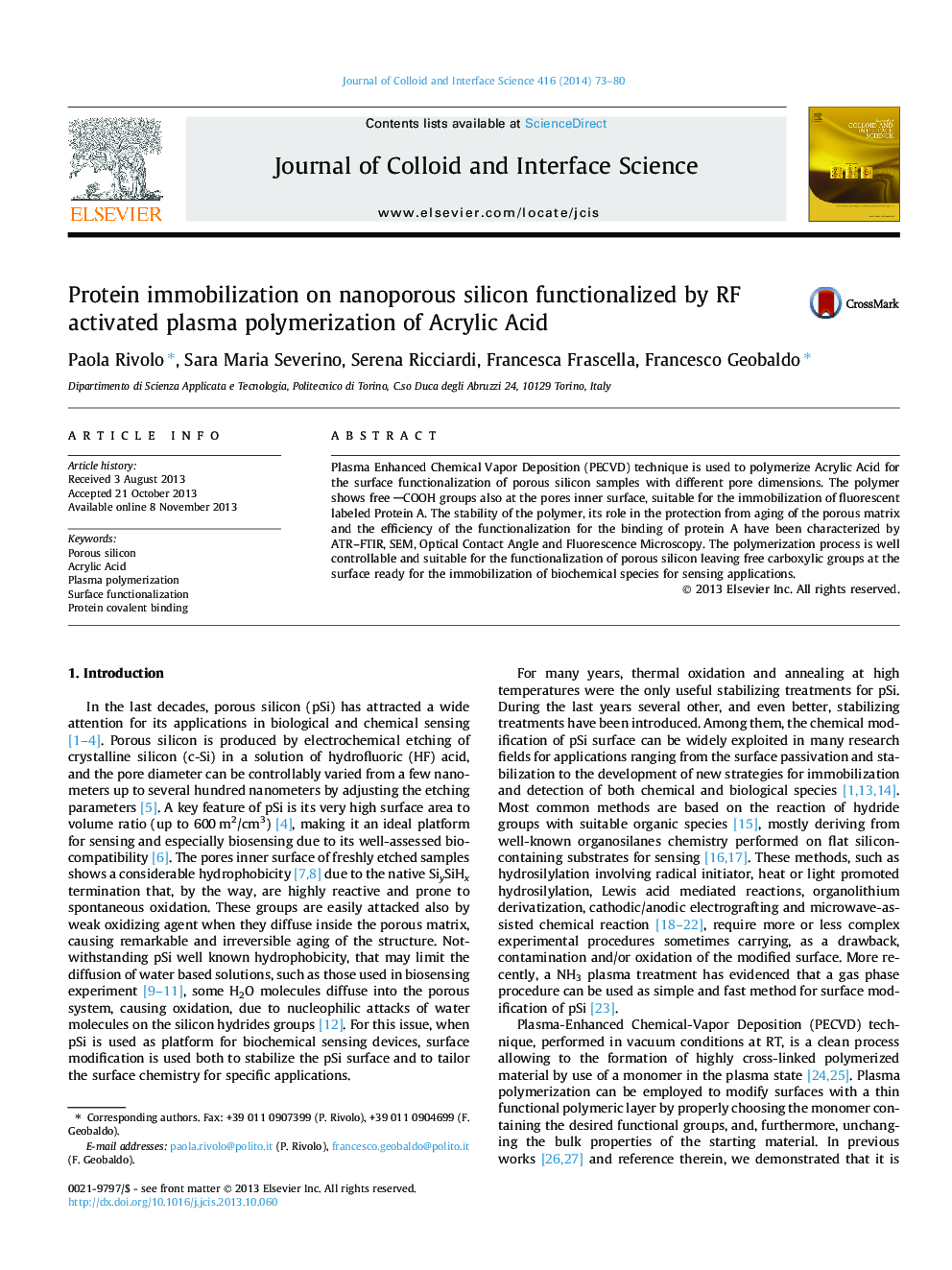| Article ID | Journal | Published Year | Pages | File Type |
|---|---|---|---|---|
| 607409 | Journal of Colloid and Interface Science | 2014 | 8 Pages |
•Plasma Polymerized Acrylic Acid exposes a large number of functional COOH groups.•Larger pores allow to a better conformal PolyAcrylic Acid coating.•PolyAcrylic Acid protects porous silicon from degradation in biological buffers.•Protein can be bound to PolyAcrylic Acid onto porous silicon.•Plasma functionalized porous silicon may be a suitable platform for biosensing.
Plasma Enhanced Chemical Vapor Deposition (PECVD) technique is used to polymerize Acrylic Acid for the surface functionalization of porous silicon samples with different pore dimensions. The polymer shows free COOH groups also at the pores inner surface, suitable for the immobilization of fluorescent labeled Protein A. The stability of the polymer, its role in the protection from aging of the porous matrix and the efficiency of the functionalization for the binding of protein A have been characterized by ATR–FTIR, SEM, Optical Contact Angle and Fluorescence Microscopy. The polymerization process is well controllable and suitable for the functionalization of porous silicon leaving free carboxylic groups at the surface ready for the immobilization of biochemical species for sensing applications.
Graphical abstractFigure optionsDownload full-size imageDownload high-quality image (60 K)Download as PowerPoint slide
